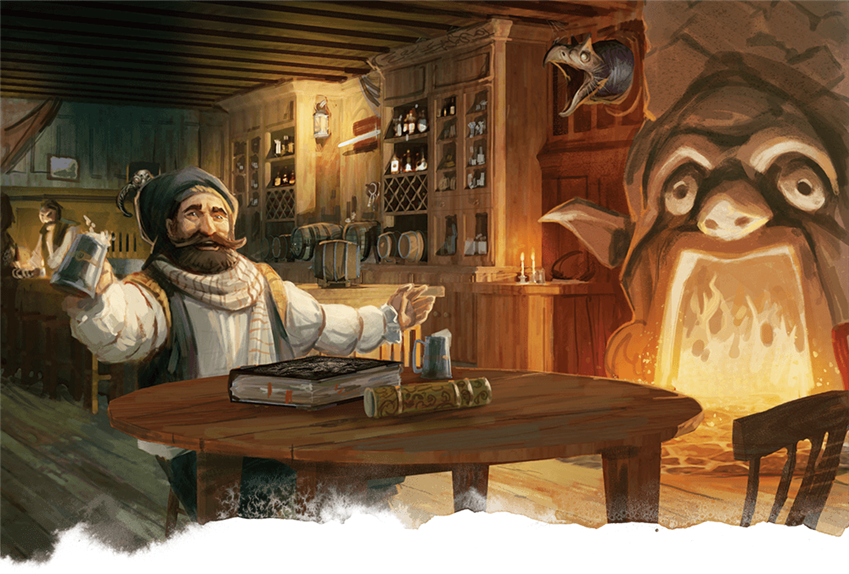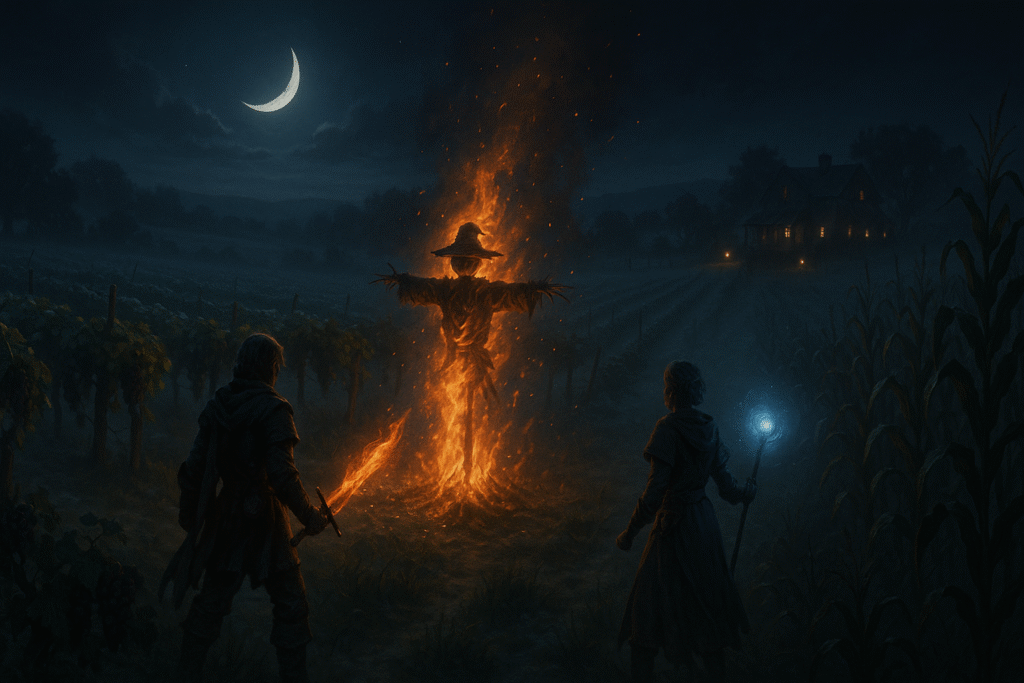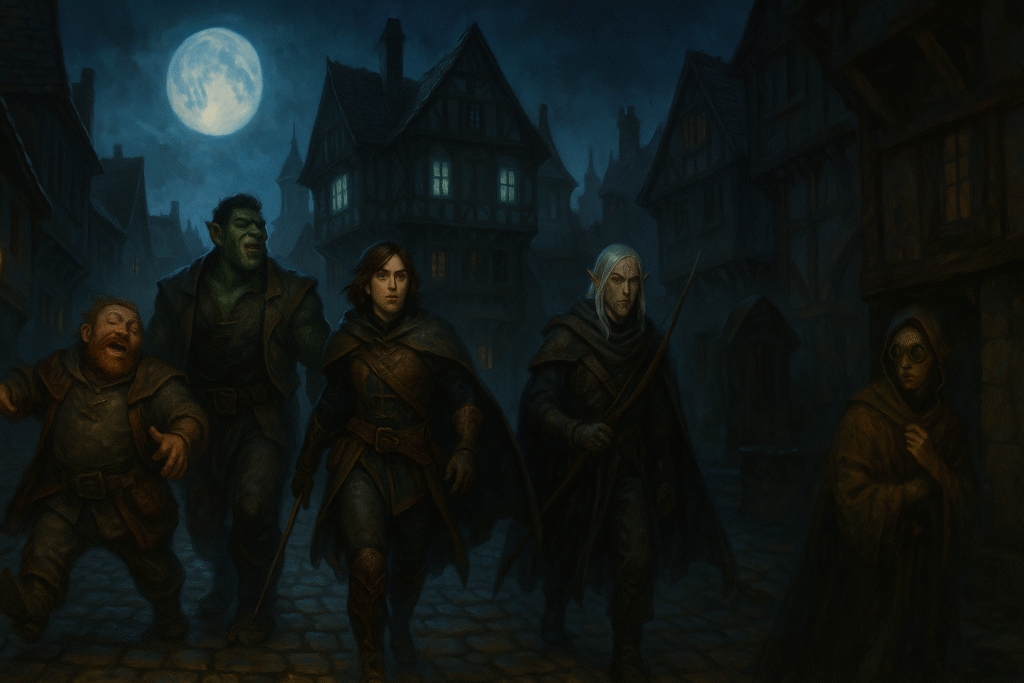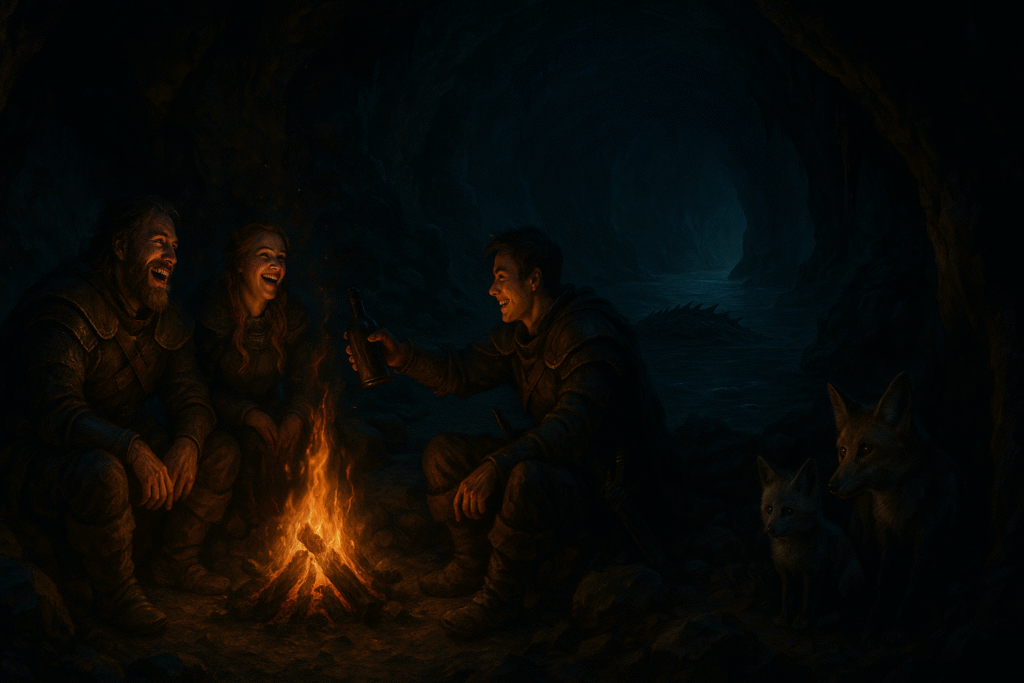Session 4: A Friend in Need

How I Introduced Volo (and a New Party Member) Without Losing Control
The Setup
Session 4 of our Waterdeep: Dragon Heist campaign picked up right after a fight that should’ve stolen the show: a bone devil and a bone naga erupting from the Undermountain to tear through the Yawning Portal. But as any DM knows, the fallout is just as important as the fight—and that’s where I focused my prep.
I had three goals going into this session:
- Let the players feel the consequences of the fight. Tension, fear, and drama shouldn’t vanish just because initiative ends.
- Introduce Volothamp Geddarm in a way that felt natural and funny without derailing the tone.
- Integrate a new player character (Clover) organically, while reinforcing party dynamics and structure.
Behind the Curtain: Planning
Much of this session hinged on a simple principle: play your NPCs like they think they’re real. Volo isn’t just a quest marker—he’s a desperate man in peacock’s feathers. So I built the emotional beat into his appeal: when he drops the showman’s grin and pleads for help, it lands because the players just saw him as a buffoon.
To prep:
- I reread Volo’s entry in the module but rephrased his dialogue in my own voice.
- I printed physical props—his guidebook and city handouts—to reinforce immersion.
- I jotted notes on how not to upstage the players. The focus was always on them.
For the new player, I gave myself an out: Volo mistakes him for one of the adventurers who helped with the fiends. He sits at the table, gets pulled into the quest pitch, and suddenly the party has to decide—do we keep him?
It gave both the group and the player a low-stakes RP opportunity to build trust.
Running the Session
Things went sideways in the best way.
The players:
- Argued over French fries and sprite analogues
- Used a spray bottle as a behavioral correction tool
- Started light bickering matches mid-negotiation
And it worked.
This was their bonding session. I didn’t force pace—I let the humor breathe. But when things risked spiraling too far, I stepped in with calm but clear nudges. “Back at the table, Volo clears his throat…” was often enough to reset focus.
I reinforced party expectations through in-character dialogue: share the loot, pull your weight, respect each other. It created buy-in for both the campaign world and the new team structure.
Lessons Learned
1. Emotional Variety Matters
Even if your session is mostly talk, aim to hit multiple emotional notes—drama, tension, comedy, sincerity. That’s what makes it memorable.
2. Let Players Explore the Moment
Not every session needs travel or combat. Sometimes a 90-minute tavern scene builds more party cohesion than a dungeon crawl.
3. Use NPCs to Guide, Not Dominate
Volo’s entrance was flashy. His plea was heartfelt. But then he got out of the way and let the party make the story theirs. That’s the DM sweet spot.
4. Bring the New Player In From the Side
Clover’s introduction as a “childlike bard with a mysterious curse” gave everyone something to react to. Starting him mid-scene helped him integrate fast—and sparked fantastic table banter.
Final Thoughts
Session 4 reminded me that some of the best D&D moments don’t happen on the battlefield—they happen between bites of steak and fizzwater while the party argues about gold and gets adopted by a magical child with a slingshot.
Next up: the party follows the trail to the Skewered Dragon. Hopefully with fewer fries—and more answers.


